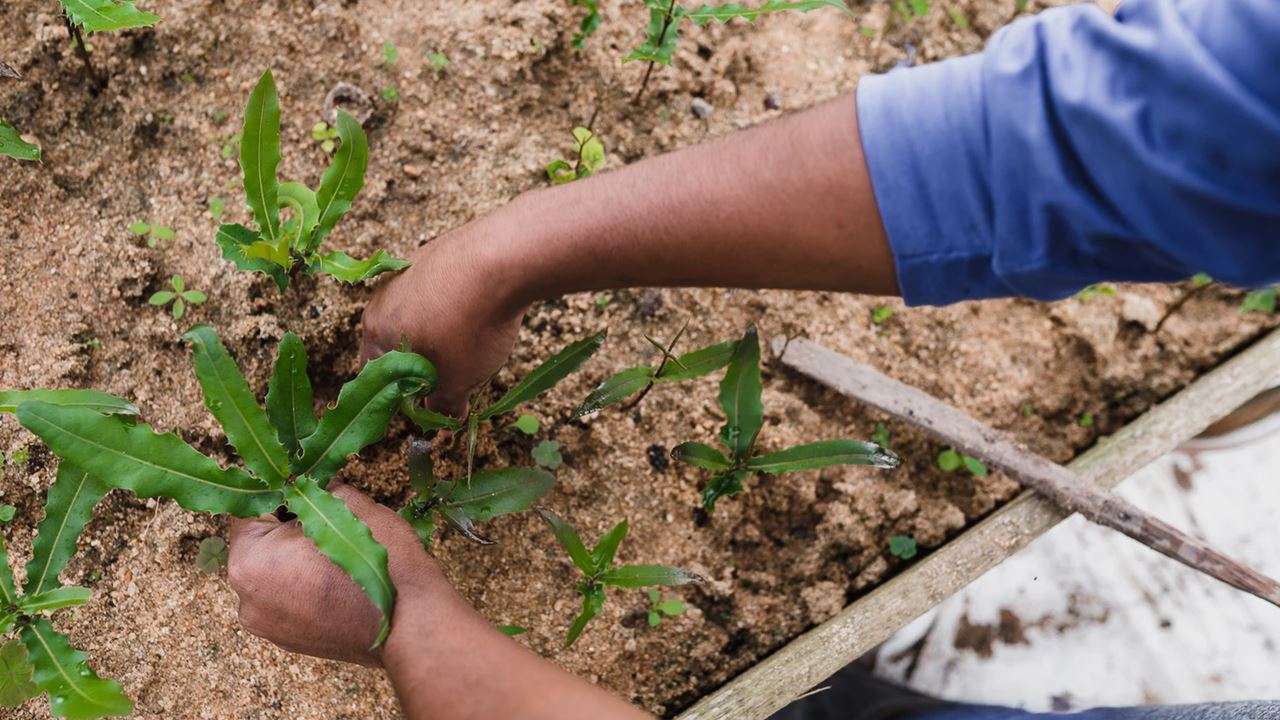
Agriculture is the single most important industry in India’s economy. India's total land area is around 329 million hectares, out of which 90 million hectares are classified as “wasteland” — that is, non-productive land. Moreover, agriculture development has not yet attained its peak due to arid, semi-arid, and saline patches of land. Its impact is especially severe on the livelihoods of the poor, who are heavily dependent on this land for livelihood. For example, about 40 percent of our 1.3 billion population depends on this land for livelihood. This makes the restoration of these wastelands not only a priority in India but also on a global level. Although due attention is being given by different state governments to increase the total area under cultivation, however, what we also need is a robust policy framework through which rejuvenation of these wastelands can happen and the agriculture capacity of the states can be enhanced.
The technique of combining agriculture and forestry, called agroforestry, can help in solving this problem of uncultivable land. Agroforestry techniques can play a significant role in sustaining agricultural production for livelihood and environmental security. These techniques can serve as a means of improving biodiversity, enhancing ecosystem services, improving soil structure and health, reduced erosion, carbon sequestration, increasing income, sustaining agricultural productivity, limiting the impacts of climate change, as well as maintaining economic growth and social structure.
There are several states that have a significant percentage of wasteland that can be leveraged for the cultivation of various horticultural and medicinal crops on a large scale with proper use of agricultural technologies and micro-irrigation facilities. Wastelands can be made fertile for the cultivation of these crops through the use of modern technologies such as net house, greenhouse, mulching, and high-density plantation. This cultivation can create the opportunity for job creation in small villages and provide a new market for exporting high-quality horticultural products, revitalizing rural economies dependent on agriculture and contributing to the agriculture development of the entire region. Furthermore, resulting carbon credits generated can be monetized by selling these to buyers looking to offset their carbon emissions.
Through various policy initiatives undertaken by the state government and the relevant ministries, blocks of uncultivable land can be identified. For example, in Gujarat, the government has allocated lands in five districts namely Kutch, Surendranagar, Patan, Banskantha, and Sabarkantha, under this scheme. There are large areas of fallow lands in Gujarat that could be used to cultivate dragon fruits, mangoes, pomegranates, bananas, ber, and other unique crops to the state. As part of this scheme, government-owned wastelands can be allocated to different stakeholders such as farmers, individuals, institutions, companies, and partnership firms on long-term leases on nominal rates. Upon completion of this lease term, the government can decide to extend the lease term based on mutual consent.
To ensure the success of this scheme, the Gujarat government is providing end-to-end support and creating a strong ecosystem. First, it is providing one subsidies: 70% of the cost incurred for the establishment of drip irrigation or a sprinkler system and 25% of the cost incurred for bore. Second, the leaseholder can get a preferential agriculture electricity connection for irrigation purposes. In case of improper agriculture electricity facilities, the leaseholder will be eligible to get a one-time subsidy: 25% of the cost incurred to install solar panels. Third, installation of the post-harvest value chain and storage units would not require to be made non-agricultural and hence leased land will be exempted from the conversion tax. Fourth, the leaseholder is eligible for one-time government assistance for the purchase of up to 5 tractors to support farm mechanization.
Through this scheme, the government has undertaken a result-oriented initiative and be the model state from which other states can take inspiration and create similar schemes, increasing India’s total land under cultivation, rejuvenate government-owned wastelands, and contribute to action for climate change.
Written by Swarandeep Singh Kambo, Sustainable Finance Specialist, CGIAR
(Disclaimer: The views, thoughts, and opinions expressed in the article belong solely to the author, and not necessarily to the author's employer or DNA)